Related Research Articles

Mendocino is an unincorporated community in Mendocino County, California, United States. The name comes from Cape Mendocino 85 miles (137 km) to the north, named by early Spanish navigators in honor of Antonio de Mendoza, Viceroy of New Spain. Despite its small size, the town's scenic location on a headland surrounded by the Pacific Ocean has made it extremely popular as an artists' colony and with vacationers.

Peter Voulkos was an American artist of Greek descent. He is known for his abstract expressionist ceramic sculptures, which crossed the traditional divide between ceramic crafts and fine art. He established the ceramics department at the Los Angeles County Art Institute and at UC Berkeley.

Dorr Hodgson Bothwell was an American artist, designer, educator, and world-traveler. A varied artist, Bothwell was considered a part of the Bay Area Surrealist artist scene and has paintings, drawings, collages, and prints in notable museums throughout the world. She was particularly known for her innovative use of serigraphy as a fine art form. Born in San Francisco, California, and later raised in San Diego, California, Bothwell knew from the age of 4 that she wanted to be an artist. As a teenager, she studied dance at the Ratliff School for Dancing. Her art career began at the California School of Fine Arts in 1921 under the tutelage of Gottardo Piazzoni and Rudolph Schaeffer. Bothwell was married to sculptor Donal Hord in 1932 but divorced shortly after likely due to her independence in traveling and difference of opinion on "domestic duties".
The Fifty-Three Stations of the Tōkaidō, in the Hōeidō edition (1833–1834), is a series of ukiyo-e woodcut prints created by Utagawa Hiroshige after his first travel along the Tōkaidō in 1832.

Oscar Victor Lange (1853–1913) was a leading photographer and occasional landscape painter in the San Francisco Bay Area of California during the late 19th century. His work is typically credited as "O.V. Lange".

The Tōkaidō road, which roughly means "eastern sea route," was the most important of the Five Routes of the Edo period in Japan, connecting Kyoto to Edo. Unlike the inland and less heavily travelled Nakasendō, the Tōkaidō travelled along the sea coast of eastern Honshū, hence the route's name.
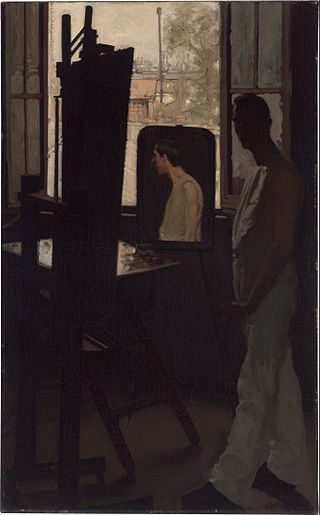
Ambrose McCarthy Patterson was a painter and printmaker.

Chiura Obata was a well-known Japanese-American artist and popular art teacher. A self-described "roughneck", Obata went to the United States in 1903, at age 17. After initially working as an illustrator and commercial decorator, he had a successful career as a painter, following a 1927 summer spent in the Sierra Nevada, and was a faculty member in the Art Department at the University of California, Berkeley, from 1932 to 1954, interrupted by World War II, when he spent a year in an internment camp. He nevertheless emerged as a leading figure in the Northern California art scene and as an influential educator, teaching at the University of California, Berkeley, for nearly twenty years and acting as founding director of the art school at the Topaz internment camp. After his retirement, he continued to paint and to lead group tours to Japan to see gardens and art.

Ruth Aiko Asawa was an American modernist artist known primarily for her abstract looped-wire sculptures inspired by natural and organic forms. In addition to her three-dimensional work, Asawa created an extensive body of works on paper, including abstract and figurative drawings and prints influenced by nature, particularly flowers and plants, and her immediate surroundings.

Maynard Dixon was an American artist. He was known for his paintings, and his body of work focused on the American West. Dixon is considered one of the finest artists having dedicated most of their art to the U.S. Southwestern cultures and landscapes at the end of the 19th-century and the first half of the 20th-century.
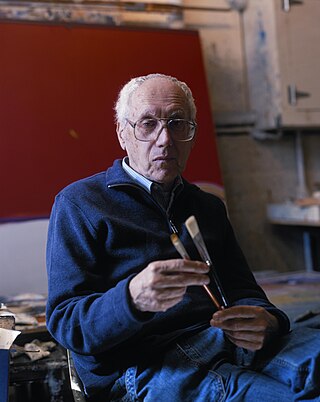
Raimonds Staprans is a well-known artist and playwright both in the United States and his native Latvia. Staprans was born in 1926 in Riga, Latvia. He now lives in San Francisco, California with his wife, scientist Ilona Staprāns. He has two daughters, Maretta Staprāns-Barlow and Alda Staprāns-Mednis.
Dave Archer is an American reverse glass painter and sculptor.
Charles Marchant Stevenson was an American artist.

Robert Kehlmann is an artist and writer. He was an early spokesperson for evaluating glass art in the context of contemporary painting and sculpture. His glasswork has been exhibited worldwide and is the focus of numerous commentaries. Kehlmann's work can be found in museums and private collections in the United States, Europe and Asia. He has written books, articles, and exhibition reviews for publications in the U.S. and abroad. In 2014 the Rakow Research Library of The Corning Museum of Glass acquired Kehlmann's studio and research archives.
Peter Mollica is an American stained glass artist.

Mary Evelyn McCormick was an American Impressionist who lived and worked around San Francisco and Monterey, California at the turn of the 20th century.
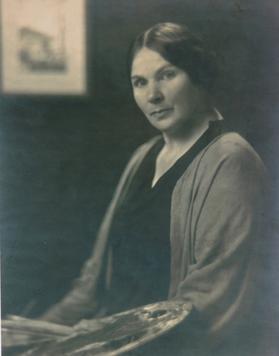
Jennie Amelia Vennerström Cannon, also known as Jennie Vennerstrom Cannon (1869–1952), was an American artist who spent most of her career in California but gained national recognition. She received the first master's degree from the Art Department at Stanford University, studied in New York with William Merritt Chase, whom she befriended and later persuaded to teach at Carmel-by-the-Sea, California, and received both the Elliott Bronze Medal and the Langdon Prize at the National Academy of Design. From her studio-homes in Berkeley and Carmel, California, her art was sent on traveling exhibitions across the United States. She was instrumental in founding the Carmel Art Association and the California League of Fine Arts in Berkeley. She championed women's equality in art communities across northern California. Her published art reviews appeared for decades in regional newspapers.
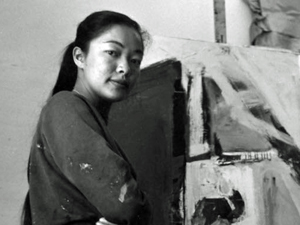
Bernice Bing was a Chinese American lesbian artist involved in the San Francisco Bay Area art scene in the 1960s. She was known for her interest in the Beats and Zen Buddhism, and for the "calligraphy-inspired abstraction" in her paintings, which she adopted after studying with Saburo Hasegawa.
Robert Boardman Howard (1896–1983), was a prominent American artist active in Northern California in the first half of the twentieth century. He is also known as Robert Howard, Robert B. Howard and Bob Howard. Howard was celebrated for his graphic art, watercolors, oils, and murals, as well as his Art Deco bas-reliefs and his Modernist sculptures and mobiles.
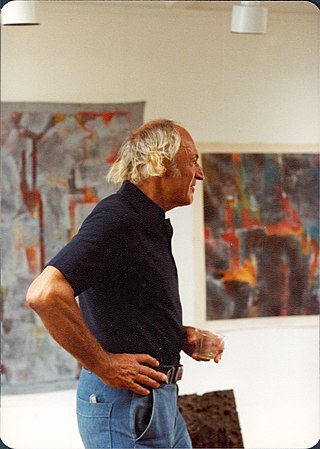
Theodore "Ted" Odza (1915–1998) was an American artist, curator, and educator, known for his sculptures and abstract paintings. He taught art classes at University of California, Berkeley, and later served as the chair of the art department of Laney College. Additionally he curated multiple national touring art exhibitions of Central European artists.
References
- 1 2 3 Brossard, Chandler (September 25, 1962). "A young man saves an old town". Look – via WilliamZacha.com.
- ↑ "Mendocino—Newest Art Colony in U.S." . Los Angeles Times . January 12, 1964 – via Newspapers.com.
- ↑ Dalbey, A. F. (May 17, 1970). "Mendocino Where Squares, Longhairs Mix". The New York Times .
- 1 2 3 Swartz, Susan (December 17, 1995). "The artist who put Mendocino on the map". The Press Democrat . ProQuest 280631167.
- ↑ "Bill Zacha; Founded Mendocino Art Center". Los Angeles Times . March 20, 1998.
- ↑ Schlein, Amy (March 19, 1998). "Founder of Mendocino artist mecca dies: Zacha reputation known globally". The Press Democrat . ProQuest 280738298.
- 1 2 3 Bush, Chuck. "The Zachas". Kelley House Museum . Archived from the original on April 30, 2011. Retrieved October 6, 2020.
- 1 2 Brazill, William P., ed. (2000). "Bill and Jennie Zacha". Mendocino Artists: An Endangered Species. North Coast Rural Challenge Network. pp. 1–2. ISBN 0-9627007-5-4.
- 1 2 "History". Mendocino Sister Cities Association. Retrieved October 1, 2023.
- ↑ "MAC History". Mendocino Art Center. Retrieved October 1, 2023.
- ↑ "Japanese students arrive for week-long visit". The Press Democrat . August 3, 1996. ProQuest 280705019.
- ↑ Korbel, Connie (May 25, 2006). "Mendocino hosts Miasa sister city group". The Mendocino Beacon .